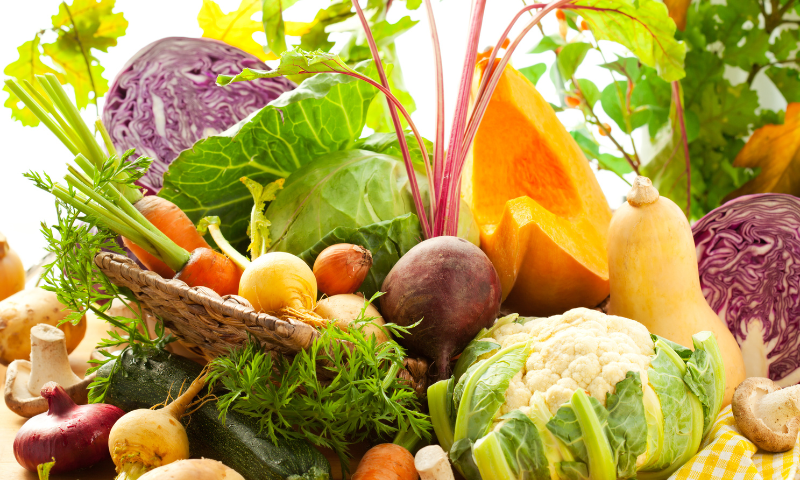What on Earth is That? | Costa Rican Veggies Part 1
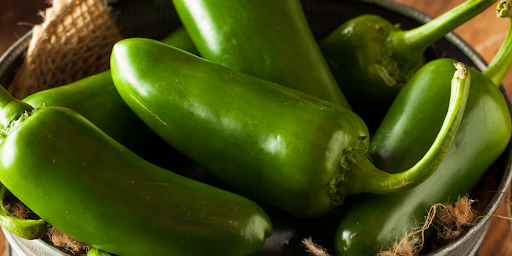
Part 3 of the What on Earth is That? series is going to be all about veggies. If you’ve been following along and learning all about the amazingly varied selection of fruit available at your typical Costa Rican market, it won’t surprise you to find out that the vegetable selection here is just as exciting.
There is also a really good selection of fresh herbs in most places. Costa Rica really is a foodie's dream come true. Maybe that’s why it attracts so many amazing chefs!
And with the ferias so full of cool things to try, I wanted to share a little bit about them with you. This is going to take more than one post, so hang onto your sombrero.
The Veggies You Know
if, like me, you’re originally from North America, I’ve got good news — pretty much everything that you can find in North America that is also available here.
The only thing, produce-wise that I haven’t been able to get my hands on is pumpkin. I assume the climate isn’t ideal, or that because it’s not a staple of the local diet that no one grows them. Maybe I should plant a few seeds and see what happens!
But apart from that, you can find everything here! Carrots, broccoli, potatoes, cauliflower, cucumber, green beans, cabbage, tomatoes, black beans, beets, eggplant, various types of onions, mushrooms, celery, spinach, radish and squash are all grown and sold at the local markets and fruit and veggie stands.
There are slight differences, as you’d expect from growing food in a different climate! One example I noticed immediately is that the corn here is a little different than what I used to get at home thanks to the dry climate. It’s closer to what we would call ‘cattle corn’ back in Canada, and ticos tend to cook it in things, or grind it up rather than eating it off the cob.
The Insanely Wide World of Peppers
Peppers are a big deal in Costa Rica. And while they also fit into the category of “Veggies You Know”, you probably have no idea the sheer variety of flavors and spices to discover. In fact, as I started digging, I found so many wonderful different peppers, that I decided to dedicate the first part of this veggie post exclusively to peppers.
It’s something you recognize, but with a vibrant Central American twist. A great start before we get into some of the truly strange and wonderful Costa Rican veggies!
Anyway, back to peppers. They are used in a lot of the various local dishes, and there are a lot of different varieties available. I honestly had no idea there were so many kinds when I started my research.
The varieties traditionally grown here are jalapeños, cayennes, tabascos, and bells, but thanks to the Habanero Project near Turrialba, along with a small growing culture of local pepper farmers, you can actually get your hands on 600 varieties of pepper. Who knew??
Here is a little info about the most common types of pepper you can find here (the number in brackets is the rating on the Scoville Heat Units for those of you who like it hot):
-
Bell Peppers

Can be eaten raw or cooked, come in green, yellow, and red varieties, are generally considered to be ‘sweet’ and can be dried up and ground into paprika… that part I did not know! (0 SHC)
-
Shishito

These are long tubular peppers, usually light green in colour, usually eaten charred or blistered and then drizzled with olive oil as an appetizer. They are considered to be ‘tame’ heat-wise, but occasionally you get a hot one, so beware! (50-100 SHU)
-
Banana Peppers
Also considered sweet, these are the ones you find in jars of antipasto. They are often used on pizzas or in salads(0-500 SHU)
-
Sweet Italian Pepper (pepperoncini)

These look and taste very similar to a banana pepper, but have a bit more zing.(100-500 SHU)
-
Pimento Pepper (cherry pepper)
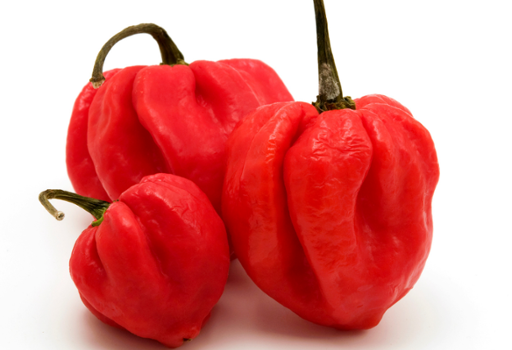
These aren’t considered spicy, and are used in Pimento cheese and olives. Since they are small and round, they are also great for stuffing and can be served as an appetizer. (100-500 SHU)
-
Piquillo/Chile Marron
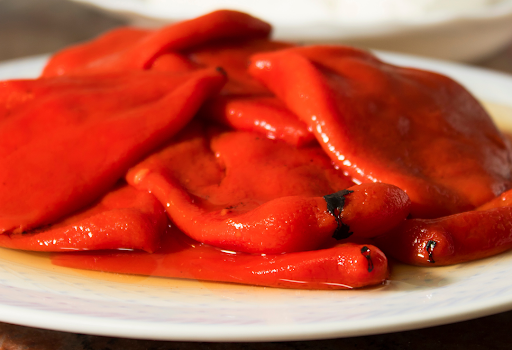
These were described as ‘not too spicy’ which seems a little vague to me. They are usually peeled before being jarred or canned and are found in specialty grocery stores rather than markets. They are pureed and added to sauces, or sometimes stuffed with cheese and baked for an appetizer. (500-1000 SHU)
-
Cuban Pepper (cubanelle)
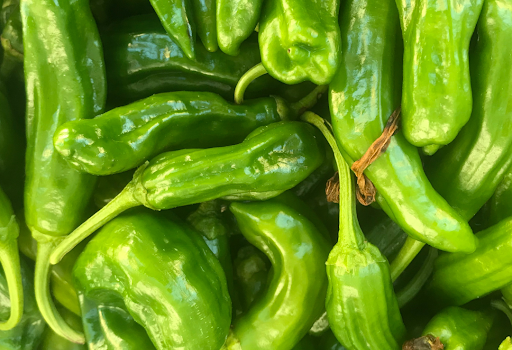
Sweet with a mild heat, these are often used instead of bell peppers in many of the same types of dishes. (1000 SHU)
-
Poblano
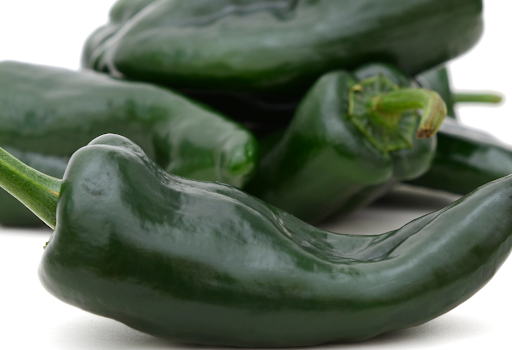
Now we’re getting a little spicier. These dark green pointed peppers are considered to have a ‘mild to medium’ heat, more heat than banana peppers and pimentos. They are usually roasted and eaten fresh, or used in chile relleno. When dried they are known as ‘ancho chiles.’ (1000-1500 SHU)
-
Anaheim
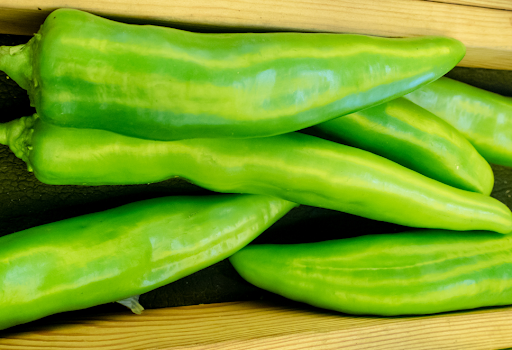
These long green peppers are between a poblano and a habanero on the heat scale, and most often sold canned. You won’t likely see these in the market. (500-2500 SHU)
-
Pasilla

These are actually dried peppers, before they are dried, they are known as chilaca. They fall below jalapenos when it comes to heat and they are most commonly used in mole sauce. (1000-2500 SHU) ***For those of you who aren’t aware of this- mole sauce is actually made with chocolate and then poured over stewed meats or enchiladas!
-
Jalapeno
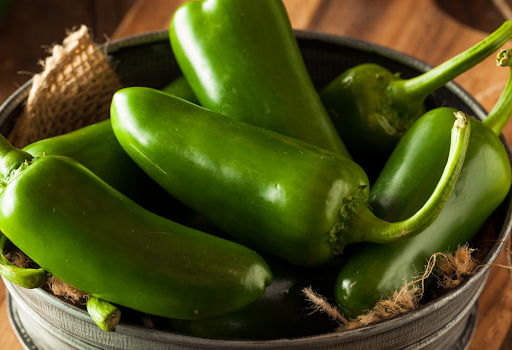
Most people are familiar with jalapeno peppers since they are used for everything from pizza to sauces to soups and salads. These little green peppers would kill me, but for pepper lovers they’re a middle of the road level of heat. Smoked jalapenos are known as chipotle peppers (2500-8000 SHU)
-
Fresno
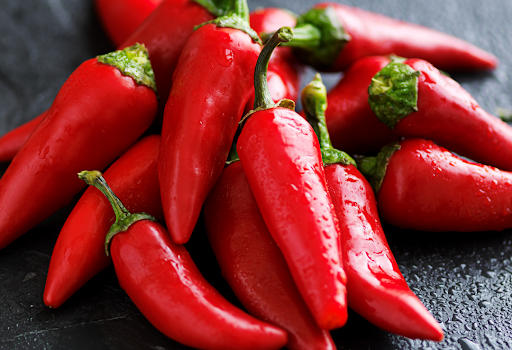
Similar to jalapenos but a bright red in colour, and a little sweeter these are great fire-roasted or in sauces and stews. (2500-10000 SHU) *** Can I just say… 10,000 SHU??? How do you people eat that??? OUCH!
-
Yellow Chile
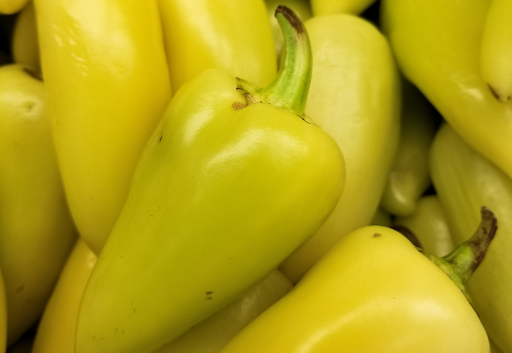
As the name suggests, these little guys are bright yellow, smooth and pointy. They are sweet and can be eaten raw, grilled, stuffed, pickled or in sauces and stews. (100-15,000 SHU)
-
Cayenne
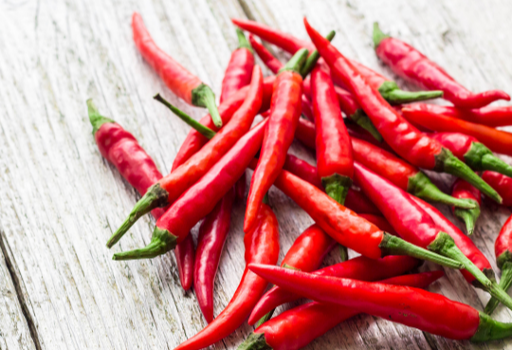
Cayenne peppers are pretty warm, about 10 times hotter than jalapeño, which means they will never-ever be on my diet. I have, however, used cayenne powder on my devilled eggs when paprika wasn’t available. I had no idea the peppers themselves were so hot. The main ingredient in the popular Franks Red Hot sauce is cayenne, (30,000-50,000 SHU)
-
The Rest of the Chili Family
With over 600 varieties available in Costa Rica, it makes sense that we’d have to group some of these options up!
Peppers in the chili family have a huge range when it comes to temperature and are both versatile and popular, not just in Central America but also throughout Africa and Asia as well. . They also have lots of different names depending on where you find them. The Cayenne pepper we mentioned above is one, but the chili family also has some truly exotic peppers, like the African bird’s eye, pedi peri/pili pili, and African Devil to name just a few. All are long, thin and very bright red, while they are used for many types of cooking, people like me ( know know little about peppers) will recognize the name mostly for the dried seeds that pizzerias offer as a sprinkle on pizza. (100,000-350,000 SHU)
-
Habanero
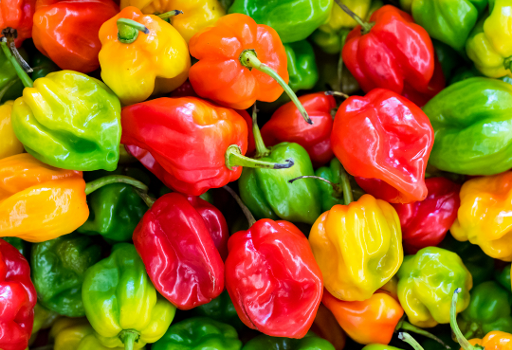
They say habaneros have some sweetness under the heat, but as one of the hottest peppers widely available, I’m not sure anyone can taste the sweetness. Not while their tongues are on fire and flames are coming out of their ears! They are used mainly for sauces, and I highly recommend having a big glass of milk nearby if you plan to use them. (100,000-350,000 SHU)
Understanding the Wide World of Peppers
Now, I personally don’t understand the appeal, but then again, I’m the wimpiest person I know when it comes to spice. Which is why I got a quote from a friend of mine, Ryan, who’s an artisan pepper farmer.
“Now I’ll be honest — it can take a little while to get used to the spicier peppers. But once you do, you’re opening yourself to an entire world of subtle, delicious flavors that lie underneath the capsaicin (which causes the spice). Like a well-grown wine grape, a thoughtfully grown pepper captures the minerals of soil, the climate of the region, and the care of the farmer to create something unique and delicious!”
So those of you who do enjoy a bit of heat in your cooking will be happy with the selection of peppers available!
It’s important to note, however, that on the whole, Costa Rican cuisine tends towards mild and sweet rather than spicy. There are lots of hot sauces (like the ones Ryan tends to make) available to spice it up though.
Now that I have typed my fingers raw talking about peppers, we can move on to all the other fun veggies that aren’t necessarily available in North America, some of which will really make you say “What on Earth is That?!”
So come on back for Part 2 of this series on Costa Rican veggies to find out about the more unusual items to be found at the local feria, as well as some info about what they taste like, and how they are used.
Until then Pura Vida!





